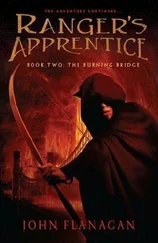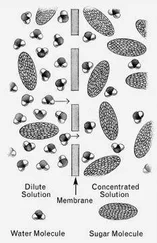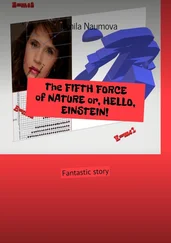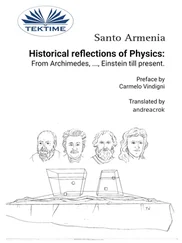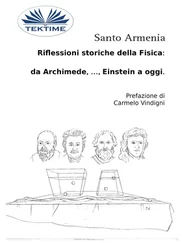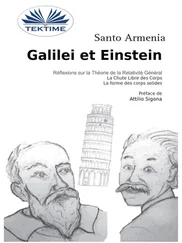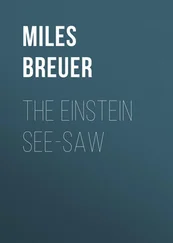“Is the bad one the same chip we looked at with the STM?” George asked as he worked.
“Unfortunately, no,” said Wolfgang. “The STM probe did some surface damage to that one, and I thought it would be better to start fresh. However, this chip was mounted near the other in the pixel detector and shows exactly the same symptoms.” He moused START PUMPDOWN on the microprobe control computer’s screen. The roughing pump below the apparatus made a chugging sound as it removed air from the microprobe’s inner chamber.
As they waited for the vacuum to improve, George, still feeling the excitement of the weekend’s developments, began to tell Wolfgang about his recent Snark hunt. Wolfgang seemed interested at first and asked about the tracking and kinematics of the peculiar object. But when George began to describe the repetitive flashes and prime number sequences, Wolfgang’s attitude changed. He looked uncomfortable, as if George were describing something private and personal that he did not wish to hear about. Too bad, George thought, considering Wolfgang’s reaction. He had been hoping to recruit him to help with their Snark investigations.
Wolfgang got up, tapped the mechanical vacuum gauge unnecessarily, moused around the computer screen, and announced that the vacuum was now down below the top operating limit and the microprobe was ready. George nodded and Wolfgang started the imaging sequence. The scanning microprobe produced a beam of electrons that were scanned in a tiny raster pattern across the sample. The viewing screen of the device was scanned with the same raster and modulated in brightness by a current of scattered electrons received on one side of the device. The result was a startlingly realistic and sharply focused microscopic image of the scanned area.
The sharp image quality of the microprobe, however, was not the reason George and Wolfgang were using it. The scanned electron beam which the device used was unusually energetic, and when it struck individual atoms, it sometimes knocked out their inner-shell electrons, causing them to produce X rays with an energy characteristic of the producing atom. These X rays were detected by the device, and their energies used to color the microprobe image that appeared on the screen.
“Let’s find one of the destroyed FET gates on the bad chip,” said George.
Wolfgang moused a slide bar on the control screen, and the picture blurred, then stabilized. There was less magnification than the STM had provided, but the gate region was visible. Wolfgang found a gate where the characteristic hourglass shape had been distorted into two separated pink clumps. Around the ruined gate were clusters of green speckles.
“Green,” said George. “What does that mean?”
Wolfgang used the mouse to make a box around one of the larger speckles, then clicked on a control. A new window appeared. It showed the black points of the measured X-ray spectrum, a smooth variation ending in a series of spikes, overlaid in green with the matching reference spectrum that the computer had fitted to it. The graph label in the lower right of the window showed the green line of the fit with the symbol Cd.
“ ‘Cd,’ that’s cadmium,” said George. “What the hell would cadmium be doing on that chip?”
Wolfgang scanned other regions of the chip and found similar green speckles. He set a cut so the microprobe responded only to the cadmium X rays and backed off the magnification. A pattern became clear. Near the end of the chip where the tiny gold connection wires were attached there were concentrations of the material. He panned over to the new chip. No such areas were present. “It must have come from the manufacturing process used in that particular batch,” Wolfgang said.
“I doubt it,” said George. “Remember the tests we did on unused chips? I think this cadmium contamination must have something to do with the way they were mounted in the pixel detector’s holder. Let me try a long shot.”
He pulled his cellphone from his pocket and dialed. “Hi, Murray,” he said, “George Griffin. I’m glad you’re in already.”
“Hi, George,” Murray’s voice answered in the earpiece. “Yeah, I had to come in early today to get something ready before a contractor crew arrives. What’s up?”
“Murray,” George said. “What do you know about how the chip connections were made on the pixel detector? Were we using any new techniques or materials? I’m particularly interested in soldering or spot welding.”
“Hmm,” Murray said and paused. “Yeah, I remember. We had some problems with cracked solder joints due to the flexing of the thin beryllium frame, so we went to a new more ductile solder alloy. I think it came from Japan or somewhere. Sony had been using it in some of their LCD processes.”
“Do you have a spec sheet on it?” George asked.
“Yeah, lemme see here…” George could hear the sound of typing as Murray interrogated the LEM materials specification database. “Aha! Here it is. What did you want to know?”
“Is there a breakdown of the metals used in the alloy?” George asked.
“Um, yeah. It doesn’t give percentages, that must be proprietary info, but it says that in descending order of concentration it contains tin, lead, silver, cadmium, and indium.” “Bingo! Thanks, Murray. I think you’ve just solved our pixel detector problem.” George felt a great wave of relief. The problem that had been plaguing him for months was probably solved.
He hung up and turned to Wolfgang. “There’s cadmium in the solder they were using for mounting chips,” he said.
“Ja,” said Wolfgang, “so…?”
“Cadmium has a low vaporization temperature. It gets spread around easily, and can migrate on a substrate in the presence of electric fields. And it selectively absorbs neutrons and makes betas and gamma rays. It’s used as a neutron-eater to control nuclear reactors. That’s harmless in a normal environment, but near the SSC beam there are great floods of neutrons traveling along the beam line. That’s what’s killing our detectors. We’ve been poisoning them with cadmium-based solder.”
“Ja,” said Wolfgang, “and ATLAS wasn’t using such solder, so it had not the problems. I see. Sehrgut, George. We must test this theory, of course.”
“Of course,” said George, “but at least I have some progress to report at the group meeting this morning. I’ll need some hardcopies of those images showing the cadmium spots.”
Wolfgang set about capturing the microprobe images they had produced as image files.
George’s cellphone beeped. He excused himself, walked across the room, and pressed the receive button. Must be Murray calling back, he thought.
“Hello, George.” It was Roger. “I’ve been working all night on our little problem. I understand the message!”
“You do?” George said. “That was fast. Tell me all about it.” Roger sounded very alert for someone who had been up all night.
“The 12 primes and 144 primes were the key,” Roger said rapidly. “The following bitstream is a set of pictures. The resolution matrix is 1728 by 1728. That’s 12 to the third power, 12 times 144.”
“Excellent,” said George. “And what are the pictures?” He was feeling a rising excitement. This was starting out to be a very good day.
“There are twelve pictures in all,” Roger said. “I don’t understand all of it yet, but I’ve made some progress. It seems to be a tutorial in elementary science, very graphic and with a minimum of symbols. You know the bit. The periodic table, the structure of matter, and so forth.”
“That doesn’t sound very informative,” said George, feeling a slight disappointment. Roger seemed to be building up slowly to… what?
Читать дальше



